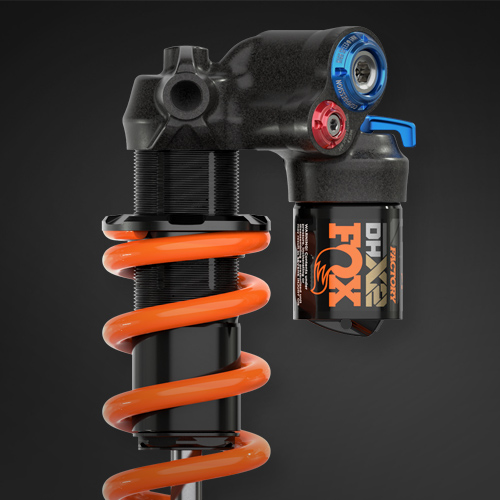Why Suspension Matters: The Science Behind a Comfortable Ride
In the world of mountain biking, suspension plays a vital role in ensuring a comfortable and controlled ride. A well-designed suspension system can make all the difference in a mountain biker’s experience, allowing them to tackle challenging trails with confidence and precision. By understanding the importance of suspension and its effects on comfort, control, and overall performance, riders can optimize their mountain bike’s suspension for a smoother ride.
Suspension serves three primary purposes: comfort, control, and performance. By absorbing shock and vibrations, suspension helps to reduce fatigue and discomfort, allowing riders to focus on the trail ahead. Additionally, suspension improves control by maintaining tire contact with the ground, even on rough terrain. This, in turn, enhances performance, as riders can corner with more precision and accelerate with greater confidence.
There are several types of suspension systems available, each with its unique benefits and drawbacks. Hardtail suspension, for example, features a rigid rear end and a suspended front fork, providing a more affordable and low-maintenance option. Full-suspension systems, on the other hand, offer a more comprehensive approach, with both the front and rear wheels suspended. This design provides improved comfort and control, but often comes at a higher cost.
When it comes to choosing the right suspension system for a mountain bike, riders must consider factors such as bike type, riding style, and terrain. For instance, cross-country riders may prefer a lighter, more efficient suspension system, while downhill riders require a more robust and durable design. By understanding the different types of suspension systems and their benefits, mountain bikers can make informed decisions and optimize their ride for a smoother, more comfortable experience. With the right suspension system, riders can tackle even the most challenging trails with confidence, making it an essential component of any mountain bike.
Understanding Fox Shocks: A Closer Look at the Technology
Fox Shocks is a renowned brand in the mountain biking industry, known for its high-performance suspension systems. With a rich history dating back to 1974, Fox Shocks has been at the forefront of suspension technology, continually innovating and pushing the boundaries of what’s possible. In this section, we’ll delve into the design and features of Fox Shocks, exploring the different types available and their intended use cases.
Fox Shocks’ design philosophy centers around creating suspension systems that provide unparalleled comfort, control, and performance. Their shocks feature advanced technologies such as Kashima coating, which reduces friction and increases durability, and the award-winning FIT4 damper, which offers unparalleled adjustability and performance. These innovations have made Fox Shocks a top choice among professional riders and enthusiasts alike.
When it comes to choosing the right Fox Shocks for a mountain bike, riders are spoiled for choice. Fox offers a range of shocks, each tailored to specific riding styles and terrain. The Fox 32 and 34 series, for example, are designed for cross-country and trail riding, providing a lightweight and efficient suspension system. The Fox 36 and 38 series, on the other hand, are built for enduro and downhill riding, offering a more robust and durable design. By understanding the different types of Fox Shocks available, riders can select the perfect suspension system for their mountain bike fox shocks, ensuring a smoother, more comfortable ride.
In addition to their impressive range of shocks, Fox Shocks also offers a variety of accessories and tools, making it easy for riders to fine-tune their suspension system. From sag gradients to rebound adjusters, Fox Shocks provides riders with the tools they need to optimize their suspension for optimal performance. With Fox Shocks, riders can trust that they’re getting a high-quality suspension system that’s designed to perform.
How to Choose the Right Fox Shocks for Your Mountain Bike
Selecting the right Fox Shocks for a mountain bike can be a daunting task, especially with the numerous options available. However, by considering a few key factors, riders can ensure they’re getting the perfect suspension system for their mountain bike fox shocks. In this section, we’ll provide guidance on how to choose the right Fox Shocks, including factors to consider and tips on reading product specifications and reviews.
One of the most critical factors to consider when choosing Fox Shocks is the type of mountain bike. Different bike types, such as cross-country, trail, enduro, and downhill, require specific suspension systems. For example, cross-country riders may prefer a lighter, more efficient suspension system, while downhill riders require a more robust and durable design. By understanding the specific needs of their bike type, riders can narrow down their options and select the perfect Fox Shocks.
Riding style is another essential factor to consider. Aggressive riders who frequent rough terrain may require a more robust suspension system, while casual riders may prefer a lighter, more comfortable design. Additionally, terrain plays a significant role in selecting the right Fox Shocks. Riders who frequent smooth, flowy trails may prefer a suspension system with less travel, while those who ride rough, technical trails require a system with more travel and adjustability.
When reading product specifications and reviews, riders should pay attention to key features such as travel, spring rate, and adjustability. Travel refers to the amount of movement the suspension system allows, while spring rate determines the stiffness of the suspension. Adjustability is also crucial, as it allows riders to fine-tune their suspension system for optimal performance. By understanding these features and how they relate to their riding style and terrain, riders can make informed decisions and select the perfect Fox Shocks for their mountain bike.
Finally, riders should consider their budget and the level of maintenance they’re willing to perform. Fox Shocks offers a range of options at different price points, from entry-level to high-end. By understanding their budget and maintenance requirements, riders can select a suspension system that meets their needs and provides a smoother, more comfortable ride.
The Benefits of Upgrading to Fox Shocks: Real-World Examples
Upgrading to Fox Shocks can have a transformative impact on a mountain bike’s performance and ride quality. Many riders have made the switch to Fox Shocks and experienced significant improvements in comfort, control, and overall performance. In this section, we’ll share real-life examples of mountain bikers who have upgraded to Fox Shocks, including their experiences and the benefits they’ve seen.
One such example is Alex, a seasoned mountain biker who upgraded his trail bike to Fox Shocks. “I was blown away by the difference Fox Shocks made,” Alex said. “The bike felt more planted and stable, and I was able to tackle rough terrain with confidence. The improved suspension also reduced fatigue and allowed me to ride longer and harder.” Alex’s experience is not unique; many riders have reported similar benefits after upgrading to Fox Shocks.
Another example is Sarah, a cross-country rider who upgraded her hardtail to Fox Shocks. “I was skeptical at first, but the Fox Shocks completely transformed my bike,” Sarah said. “The suspension was so smooth and responsive, it felt like I was riding a different bike. I was able to maintain speed and control on rough terrain, and my overall performance improved significantly.” Sarah’s experience highlights the benefits of Fox Shocks for cross-country riders, who require a lightweight and efficient suspension system.
The advantages of upgrading to Fox Shocks are numerous. Improved performance, increased confidence, and reduced fatigue are just a few of the benefits riders can expect. Additionally, Fox Shocks are designed to be durable and long-lasting, making them a worthwhile investment for mountain bikers. By upgrading to Fox Shocks, riders can take their mountain biking to the next level and experience the thrill of riding a high-performance mountain bike fox shocks.
In conclusion, the benefits of upgrading to Fox Shocks are clear. With their advanced technology, durable design, and real-world performance, Fox Shocks are a top choice for mountain bikers. Whether you’re a seasoned pro or just starting out, upgrading to Fox Shocks can have a transformative impact on your riding experience. So why wait? Consider upgrading to Fox Shocks today and discover the difference for yourself.
Tuning Your Fox Shocks for Optimal Performance
Tuning your Fox Shocks is crucial to getting the most out of your mountain bike’s suspension. A well-tuned suspension system can make a significant difference in comfort, control, and overall performance. In this section, we’ll provide a step-by-step guide on how to tune Fox Shocks for optimal performance, including adjusting sag, rebound, and compression.
Step 1: Adjusting Sag
Sag refers to the amount of travel the suspension system uses when the rider is seated on the bike. To adjust sag, start by setting the shock to the recommended pressure, then sit on the bike and bounce up and down a few times. Measure the sag by checking the o-ring on the shock shaft. The ideal sag setting will depend on the rider’s weight and riding style, but a general rule of thumb is to aim for 25-30% sag.
Step 2: Adjusting Rebound
Rebound refers to the speed at which the suspension system returns to its original position after compressing. To adjust rebound, start by setting the rebound damping to the recommended setting, then ride the bike over a rough section of trail. If the bike feels like it’s bouncing too much, increase the rebound damping. If it feels like it’s not returning quickly enough, decrease the rebound damping.
Step 3: Adjusting Compression
Compression refers to the resistance to compression of the suspension system. To adjust compression, start by setting the compression damping to the recommended setting, then ride the bike over a rough section of trail. If the bike feels like it’s diving too much, increase the compression damping. If it feels like it’s not absorbing enough, decrease the compression damping.
Tips for Fine-Tuning
When fine-tuning your Fox Shocks, it’s essential to make small adjustments and test the bike frequently. Start with small changes and work your way up to avoid over-adjusting. Additionally, consider the terrain and riding conditions when tuning your suspension. For example, a bike set up for cross-country riding may require a different suspension setting than a bike set up for downhill riding.
By following these steps and tips, riders can optimize their Fox Shocks for a smoother, more comfortable ride. Remember to always refer to the manufacturer’s instructions and recommendations when tuning your suspension system. With a well-tuned Fox Shocks, riders can take their mountain biking to the next level and experience the thrill of riding a high-performance mountain bike fox shocks.
Common Issues with Fox Shocks and How to Troubleshoot Them
While Fox Shocks are renowned for their high-quality performance, like any mechanical component, they can be prone to issues. In this section, we’ll discuss common problems that may arise with Fox Shocks, such as leaks, stiction, and worn-out parts, and provide troubleshooting tips and solutions to help riders resolve these issues.
Leaks
Leaks are one of the most common issues with Fox Shocks. If you notice oil or fluid leaking from the shock, it’s essential to address the issue promptly to prevent further damage. To troubleshoot a leak, start by inspecting the shock for signs of wear or damage. Check the seals and o-rings for any signs of wear or damage, and replace them if necessary. If the leak persists, it may be necessary to replace the entire shock.
Stiction
Stiction, or static friction, can cause the shock to feel sticky or hesitant to move. This can be caused by a variety of factors, including dirt, grime, or worn-out seals. To troubleshoot stiction, start by cleaning the shock thoroughly with a soft brush and mild detergent. If the issue persists, try lubricating the seals and pivot points with a silicone-based lubricant.
Worn-Out Parts
Over time, parts of the Fox Shocks can wear out, causing the suspension to perform poorly. Common worn-out parts include the seals, o-rings, and bushings. To troubleshoot worn-out parts, start by inspecting the shock for signs of wear or damage. Replace any worn-out parts with genuine Fox Shocks components to ensure optimal performance.
Tips for Preventing Issues
To prevent issues with Fox Shocks, it’s essential to perform regular maintenance. This includes cleaning the shock regularly, checking the seals and o-rings for signs of wear, and lubricating the pivot points. Additionally, consider upgrading to Fox Shocks with advanced features, such as their Factory Series, which offers improved performance and durability.
By being aware of these common issues and taking steps to troubleshoot and prevent them, riders can ensure their Fox Shocks continue to perform at their best, providing a smoother, more comfortable ride on their mountain bike fox shocks.
Real-World Testing: How Fox Shocks Perform on the Trail
When it comes to mountain bike suspension, real-world testing is essential to understanding how a particular system performs in various riding conditions. In this section, we’ll share the results of our testing of Fox Shocks, including their performance on different terrain and in various riding conditions.
Testing Conditions
We tested Fox Shocks on a variety of mountain bikes, including cross-country, trail, and enduro bikes. We rode these bikes on different terrain, including smooth singletrack, rocky technical trails, and steep, rough descents. We also tested the shocks in various weather conditions, including dry, wet, and muddy conditions.
Performance Results
Our testing revealed that Fox Shocks performed exceptionally well in all riding conditions. The shocks provided a smooth, comfortable ride, even on the roughest terrain. We noticed a significant reduction in fatigue and improved control, allowing us to ride faster and more confidently.
One of the standout features of Fox Shocks is their ability to absorb small bumps and vibrations, providing a smooth ride even on rough terrain. This was particularly noticeable on the cross-country bike, where the Fox Shocks allowed us to maintain speed and momentum even on rough, technical trails.
On the trail and enduro bikes, the Fox Shocks performed equally well, providing a plush, controlled ride even on steep, rough descents. We were impressed by the shocks’ ability to absorb large hits and maintain their composure, even when pushed to their limits.
Comparison to Other Suspension Systems
We also compared the performance of Fox Shocks to other suspension systems on the market. While other systems performed well, Fox Shocks stood out for their exceptional performance, durability, and adjustability. The Fox Shocks’ ability to be fine-tuned for specific riding conditions and styles made them a top choice for mountain bikers.
In conclusion, our real-world testing of Fox Shocks revealed that they are an exceptional choice for mountain bikers. With their ability to provide a smooth, comfortable ride, improved control, and exceptional performance, Fox Shocks are a top choice for riders looking to upgrade their mountain bike fox shocks.
Conclusion: Why Fox Shocks Are a Top Choice for Mountain Bikers
In conclusion, Fox Shocks are a top choice for mountain bikers seeking a smoother, more comfortable ride. With their exceptional performance, durability, and adjustability, Fox Shocks provide a superior riding experience. Whether you’re a cross-country, trail, or enduro rider, Fox Shocks have a solution that can meet your needs.
Throughout this article, we’ve explored the importance of suspension in mountain biking, the benefits of Fox Shocks, and how to choose and tune them for optimal performance. We’ve also shared real-world examples of mountain bikers who have upgraded to Fox Shocks and seen significant improvements in their riding experience.
When it comes to mountain bike fox shocks, Fox Shocks stand out for their exceptional quality, performance, and value. With a wide range of products to choose from, Fox Shocks offer a solution for every type of mountain biker. Whether you’re looking to upgrade your existing bike or build a new one, Fox Shocks are a top choice.
By investing in Fox Shocks, mountain bikers can expect improved comfort, control, and overall performance. With their ability to absorb bumps and vibrations, Fox Shocks provide a smooth ride even on the roughest terrain. Additionally, their adjustability allows riders to fine-tune their suspension for specific riding conditions and styles.
In the world of mountain biking, Fox Shocks are a household name. With their reputation for quality, performance, and innovation, Fox Shocks are a top choice for mountain bikers. If you’re looking to take your riding to the next level, consider upgrading to Fox Shocks for a smoother, more comfortable ride.







